OnePlus 7 Pro 5G review: lightning-fast 5G speeds, same niggles as the 4G version
OnePlus 7 Pro 5G was the first 5G handset to launch in the UK... but is that the only gold medal it deserves?
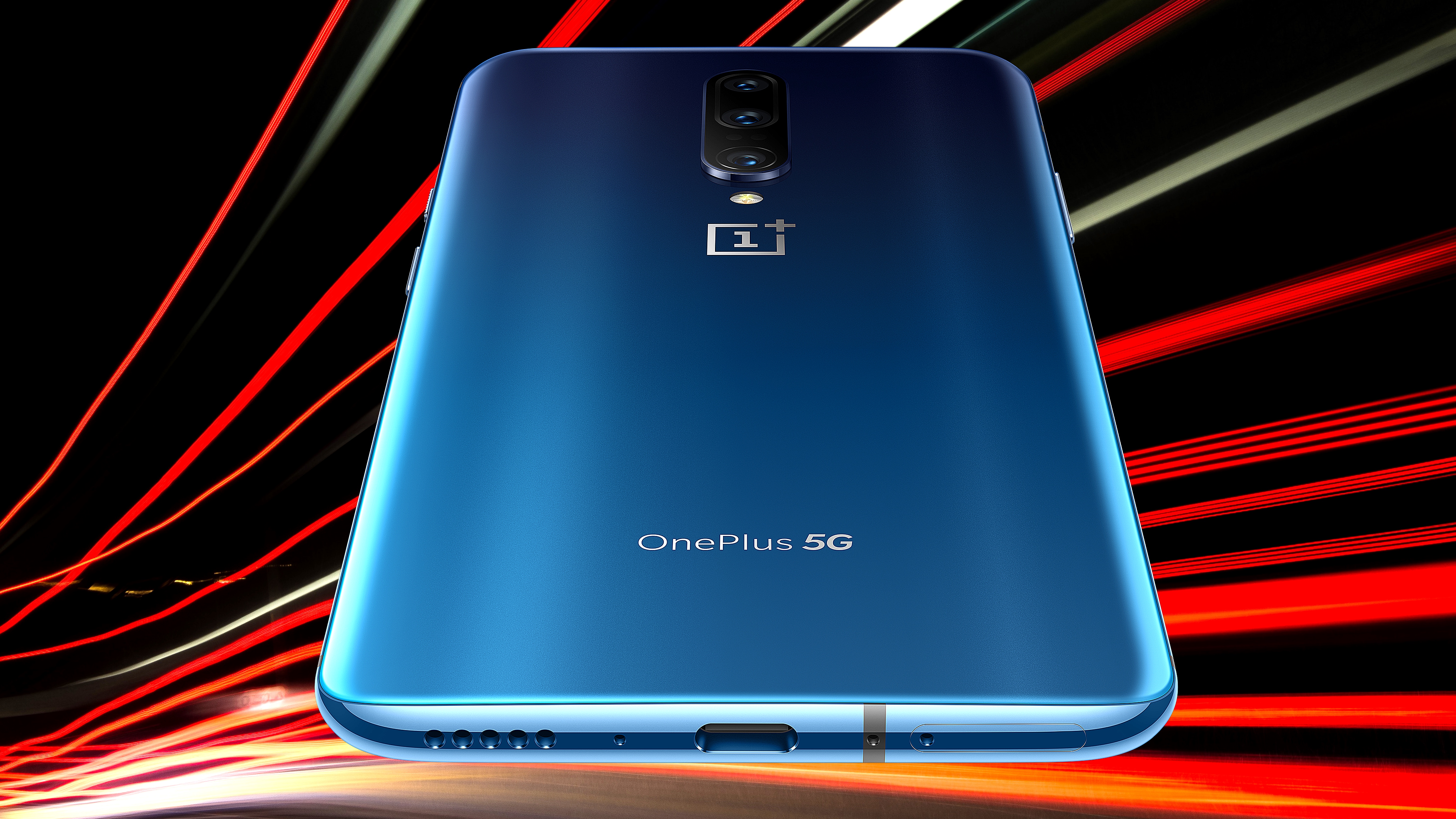
OnePlus 7 Pro 5G is a powerhouse flagship smartphone that brings fibre broadband speeds to your pocket – location permitting, naturally. It's unapologetically ambitious and sports a gorgeous 90Hz Fluid AMOLED display, top-of-the-line internals, and unmatched 30W Warp Charging speeds. But like the plain old 4G variant, there are a number of areas where the OnePlus 7 Pro 5G doesn't quite match its similarly-priced rivals like the Samsung Galaxy S10e and iPhone XR – there's no wireless charging, no expandable storage, no IP Rating for water resistance... and so on. If you can get a strong 5G signal at home or on your commute, there's a lot to love here, but don't expect perfection.
-
+
Fibre broadband speeds on EE 5G
-
+
Gorgeous 90Hz AMOLED
-
+
Flawless, Google Pixel-beating performance
-
+
30W Warp Charing is astoundingly quick
-
+
Gorgeous design and colourways
-
-
Terrible pop-up camera design
-
-
No wireless charging
-
-
No IP rating
Why you can trust T3

OnePlus 7 Pro Key Specs

Dimensions: 162.6x75.9x8.8 mm
Weight: 206 g
Screen: 6.67-inch AMOLED, 90Hz, 3120 x 1440 at 516 ppi
CPU: Qualcomm Snapdragon 855 + X50 modem
RAM: 8GB
Storage: 256GB
Battery: 4,000mAh
Cameras: 48MP main + 8MP telephoto + 16MP ultra-wide / 16MP selfie
OS: OxygenOS 9.5 / Android 9.0 Pie
OnePlus 7 Pro 5G is not only the first 5G-enabled handset from the plucky Shenzhen-based company, but was also the first 5G-enabled handset to ever go on-sale in the UK. That's a pretty momentous achievement for a smartphone manufacturer that didn't even exist more than five years ago.
Unlike the regular OnePlus 7 Pro, there isn't any choice when it comes to configurations with the OnePlus 7 Pro 5G, which has 8GB of RAM and 256GB of non-expandable storage. That matches the specs in the £699 SIM-free middle-tier model in the OnePlus 7 Pro range, which starts from £649 and maxes-out at £799.
Interestingly, OnePlus hasn't launched a 5G-enabled version of the all-singing, all-dancing OnePlus 7 Pro which sports 12GB of RAM and 256GB of storage. So, while you'll be getting the fastest network speeds available right now, you won't be getting the fastest OnePlus handset on the market. Like the specs, there's also no choice in colours – so you won't be able to get the (admittedly, quite vanilla) Mirror Grey, or the limited edition Almond finish on your 5G handset anytime soon.
But, is the OnePlus 7 Pro 5G any good? And more importantly, does the arrival of 5G support in the OnePlus flagship make enough of a difference to your quotidian life that it's worth upgrading from the good ol' fashioned 4G-toting OnePlus 7 Pro?
Read our in-depth OnePlus 7 Pro 5G review to find out …
OnePlus 7 Pro 5G Review: Price, Release Date
OnePlus 7 Pro 5G was the first 5G-enabled smartphone to launch in the UK, landing on EE store shelves nationwide on May 30, 2019 when the carrier rolled-out its first wave of 5G coverage to the four capital cities in the UK: London, Cardiff, Edinburgh and Belfast – plus Birmingham and Manchester.
The handset isn't available SIM-free from OnePlus – unlike the rest of the OnePlus 7 and OnePlus 7 Pro range – so those who want to plump for the most ambitious OnePlus smartphone yet will have to buy it on a 24-month contract.
It's also an EE exclusive, so don't expect to find the OnePlus 7 Pro 5G stocked with Vodafone or Three, when the rival UK networks roll-out their 5G networks in the coming months.
So, if you're looking to bag a OnePlus 7 Pro 5G you'll need to head into your nearest EE store, or head to their website. Plans start from £64 a month, with a one-off £50 upfront cost. For that, you'll get unlimited calls and unlimited text messages, as well as 10GB of 5G mobile data. If that doesn't sound like enough – don't panic. All EE 5G plans come with Swappable Benefits, which let you switch between different perks at a moment's notice via the EE app.
Swappable Benefits include the ability to stream Apple Music, Tidal, Prime Video, Netflix or MTV without eating into your monthly data allowance. You can also get a BT Sport subscription, or take your minutes, texts and data allowance abroad without incurring any additional charges. The £64 a month plan comes with two Swappable Benefits, so you can stream both music and video without eating into your 5G mobile data allowance – making that 10GB go a lot further each month. OnePlus 7 Pro 5G plans rise to £79 a month with a £10 one-off upfront cost. For that, you'll get unlimited texts, minutes and 120GB of 5G data each month. You'll also get three Swappable Benefits to pick a range of perks.
Bizarrely, it is possible to buy the OnePlus 7 Pro 5G on a 4G only plan with EE – although why you would do this instead of just opting for the regular 4G-enabled model beggars belief. However, if you do want to future-proof your phone, but not benefit from those 5G speeds right now... EE 4G plans on the handset start from £59 a month with a one-off £170 upfront cost. For that, you'll get unlimited minutes, unlimited text messages, and 10GB of 4G mobile data each month. You'll also get a single Swappable Benefit. The priciest 4G contract comes in at £74 a month, which includes unlimited minutes, unlimited text messages, and 100GB of 4G data. It also has a £10 upfront cost and two Swappable Benefits.
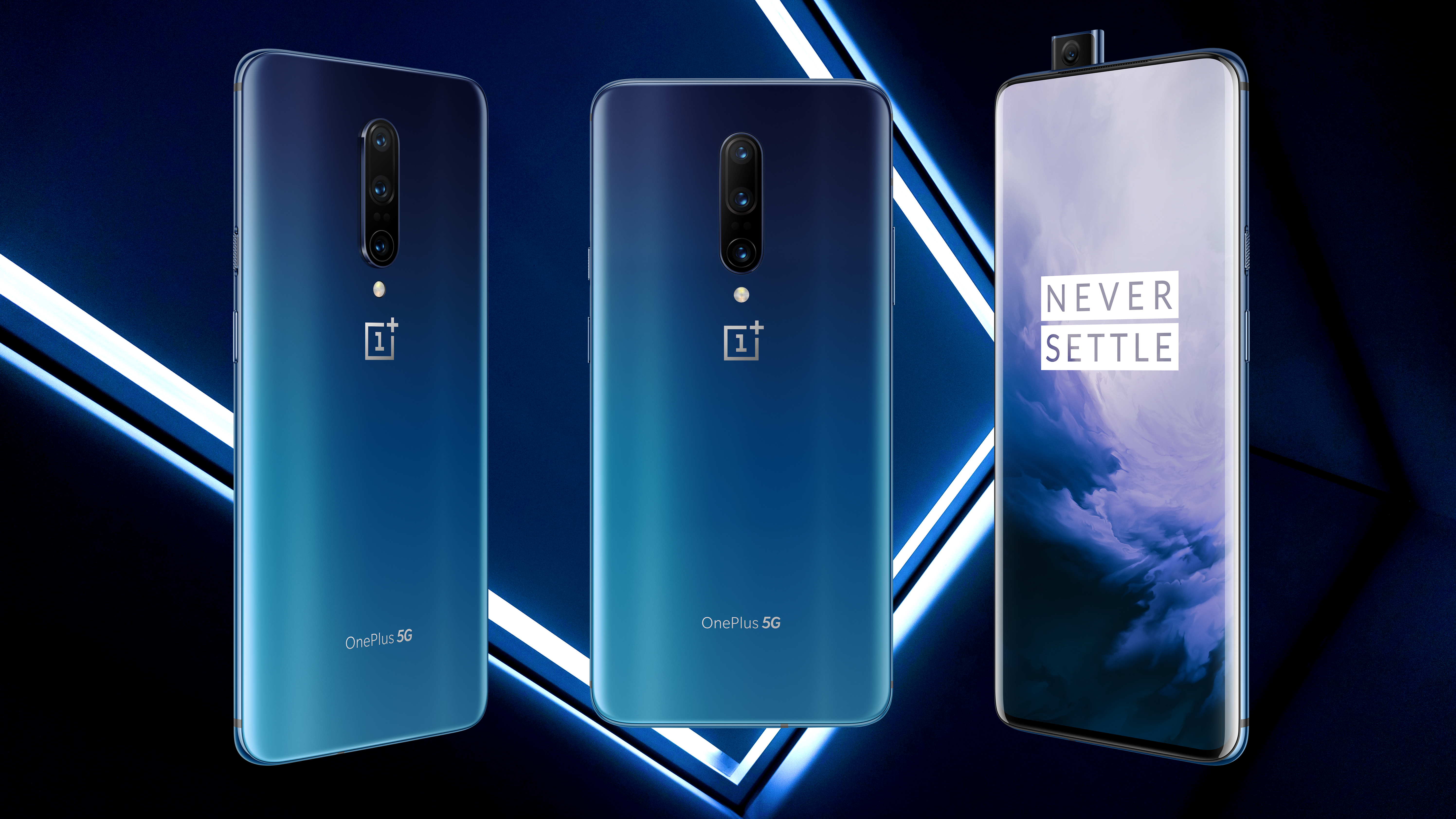
OnePlus 7 Pro 5G Review: 5G Speeds, Connectivity
First things first, if you live in a town or city that doesn't already have 5G coverage – or isn't on the roadmap to get 5G from EE by the end of the year, there's no point plumping for a 24-month OnePlus 7 Pro 5G contract anytime soon. Plans aren't cheap and the only tangible advantage over the existing OnePlus 7 Pro series is the 5G connectivity.
So, it's definitely worth scouring the list of locations that will get 5G by the end of the year (Bristol, Coventry, Glasgow, Hull, Leeds, Leicester, Liverpool, Newcastle, Nottingham, Sheffield) and throughout 2020 (Aberdeen, Cambridge, Derby, Gloucester, Peterborough, Plymouth, Portsmouth, Southampton, Wolverhampton, Worcester) before making your decision.
And even when you're slap-bang in the middle of one of the cities that already has a 5G network, it's no guarantee that you'll be able to access the next-generation network all the time. During our time with the OnePlus 7 Pro 5G in London, where the EE 5G network has been "available" for a few weeks now, there are still streets, stations, and parks where there is no 5G coverage to be found at all.
As such, there'll likely be large swathes of your morning commute where you're stuck in traffic like everyone else. Helpfully, EE has provided an incredibly detailed heat-map of each of the six cities where its 5G network is now available.
Again, it's worth stressing that before you take the plunge on a 5G-enabled device, like the OnePlus 7 Pro 5G, it's well worth checking that at least some of your most frequently visited spots are included in the 5G-touting zone. EE will continually update the map as its network expands. But if your home and office aren't in the right location, it might be worth giving a miss and sticking with good ol' 4G for now.
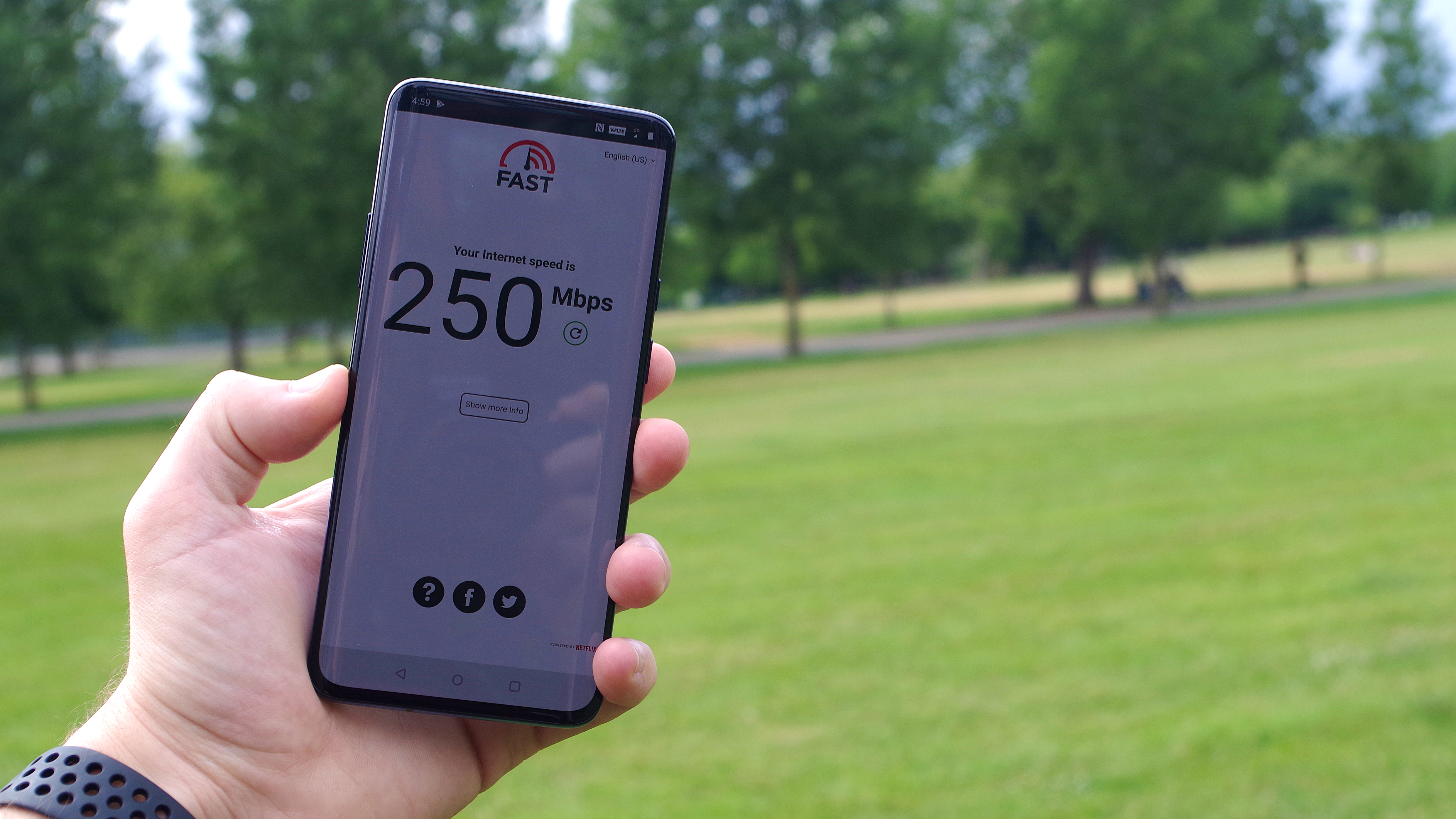
OK, with all of the disclaimers out of the way – what is it actually like when you're using the OnePlus 7 Pro 5G and you're connected to a 5G network?
Well, in a nutshell: it's the dog's bollocks.
When that all-important 5G logo flickered into life in the notification bar on our OnePlus 7 Pro 5G, it was always brilliant. The 5G speeds possible on this handset can be ludicrously fast. And even when they aren't, they're still consistently good.
According to EE, it expects customers to see speeds of around 100-150Mbps in the busiest areas. That means you'll be hitting the limit of what can be achieved on 4G... except you'll be getting those speeds almost constantly. In fact, reaching those kind of speeds in the busiest areas of the city is hugely impressive – and makes a real difference to your productivity.
Connecting to a strong 5G signal on the OnePlus 7 Pro 5G means you'll be able to refresh your social media feeds instantaneously, watch dozens of snaps upload and back-up to Google Photos in seconds, plan a route on Google Maps, or nip to the front of the queue in that all-important TicketMaster pre-sale – all while around you people with 4G handsets are gawping at looping loading animations while their apps grind to a halt, cutting off their videos in the middle of a senten-
Like any new tech, there will be a teething period with 5G while apps are updated, settings are tweaked – if you're thinking of becoming an early adopter, it's something you'll need to get used to
Of course, the OnePlus 7 Pro 5G on EE 5G is not just about consistency. If you're in the right place at the right time, it can blast past the top limit of what can be achieved on 4G, which tops-out at a (very) theoretical limit around 300Mbps. Using the OnePlus-branded handset in London I would sometimes see speeds that put fibre broadband to shame – 400Mbps on a smartphone is unbelievably fast – but that does fluctuate as you move between cell towers.
When 5G does get into stride like that, it can so quick that you'll notice a handful of baffling quirks in Android apps that were clearly dumbfounded by the internet speeds suddenly afforded to them.
For example, scrubbing ahead in a YouTube video – well past what has already buffered – you'll find no pause as the OnePlus 7 Pro 5G catches up and loads the next portion of the clip. It just plays immediately.
However, since Android apps are so accustomed to making people wait to buffer the video, the software automatically applies a grey filter on-top of the video – usually used to indicate that it's loading – even though the clip is already playing. Likewise, by default, the YouTube app only loads two dozen or so search results, so you'll find yourself hitting the bottom of the list and having to refresh quite often. This is a (sensible) decision from the app manufacturers as defaulting to loading up 100 or so video results every time you search for something on YouTube would cause any device on a typical 4G to start spitting feathers.
It'll take a while for app creators to start tweaking their apps to take full advantage of the seriously impressive new speeds available to some handsets. Like any new technology, there will be a teething period while apps are updated, settings are tweaked... if you're thinking of becoming an early adopter of 5G, it's something you'll need to get used to.

Thankfully, one thing you won't have to get used to is sh*t battery life – something that most were terrified would be the case when the first batch of 5G-enabled handsets hit the market. In our fortnight using the OnePlus 7 Pro 5G it didn't get uncomfortably warm, and didn't burn through battery as it hit 5G speeds. In fact, even when tethering the OnePlus 7 Pro 5G to our laptop to take advantage of those incredibly speedy 5G speeds on the road to get some work done (like this review) the handset didn't break into a sweat. Seriously impressive stuff.
While 5G on the OnePlus 7 Pro 5G can be preposterously fast, other times it'll just be enough that your handset is one of the only few doesn't grind to a halt in a busy train station – saving you the hassle of giving out your email address, date of birth, blood type, and name of your first-born to join the nearest free Wi-Fi hotspot.
While the EE 5G network is available in the busiest areas, it might not be available in your home, office, or your favourite local coffee shop. So, don't take the plunge unless you know that there'll be at least some parts of daily commute where you will see those all-important speeds.
If you're always tethering your smartphone to work remotely on your laptop, these speeds could drastically boost your workflow. After all, you'll have a fibre broadband connection in your pocket at any time – location permitting, naturally.
OnePlus 7 Pro 5G Review: Display, Design
Inside, the OnePlus 7 Pro 5G is a completely different beast from the standard 4G-boasting OnePlus 7 Pro – with an entirely new layout to accommodate the additional silicon needed for 5G, as well as a 10-layer liquid cooling system. It's clever stuff from the OnePlus team – not that you'd ever know it from the outside.
Out of the box, OnePlus 7 Pro 5G looks identical to the OnePlus 7 Pro. That means it has the same premium, weighty and well-built case. Like the other handsets in the range, OnePlus 7 Pro 5G still doesn't quite stand toe-to-toe with the Apple iPhone XR and Galaxy S10e in terms of build-quality – no other manufacturer has the same level of fit-and-finish as those two. However, it's up there with the likes of the P30.
As with every other flagship smartphone launched in the last few years, OnePlus 7 Pro 5G has glass front and rear panels, held together with an aluminium band. And like every other flagship, it makes for a slippery combination.
It's worth noting that while the OnePlus 7 Pro 5G gets the whatever you do, don't drop it risks associated with this type of all-glass case, it misses out on one of the only benefits of this design: wireless charging. Yes, OnePlus has (once again) decided to avoid the feature, saying that it's too slow compared to its own wired solution.
Of course, you'd have to be a fool to argue against that bulletproof argument, but it would still be a really nice feature to have – not least because wireless charging is almost ubiquitous now, appearing on portable battery packs, built into IKEA furniture, and found in a range of coffee shops and restaurant chains.
GeekBench 4 benchmarks: OnePlus 7 Pro 5G
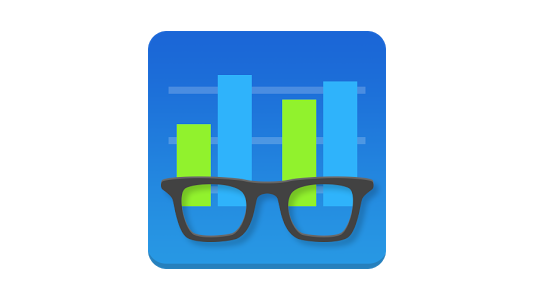
[CPU test]
Single-core: 3,525
Multi-core: 11,328
[Compute test]
RenderScript Score: 7,368
[Battery test]
Battery Score Estimate: 5,897
Wireless charging isn't fast, but it is convenient – and can help you out of a bind when you're running low on charge and have left your OnePlus wall plug at home. Especially if you've got a close friend or loved one with a Samsung Galaxy S10 Plus, Huawei Mate 20 Pro, or Huawei P30 Pro who can let you charge your handset wirelessly on the back of theirs to give you a small battery life boost.
While this type of omission is easy to shrug off at a lower price point, wireless charging is commonplace on almost all the Android handsets that OnePlus is challenging in this 5G-enabled price bracket. As a result, it's sorely missed.
One area where OnePlus 7 Pro does blow all of its competitors out of the water is the screen. And what a screen it is. OnePlus 7 Pro boasts a 6.67-inch display with a 19.5:9 aspect ratio, making this comfortably the biggest OnePlus has ever launched.
Not only that, the panel on the Pro uses a technology the company is branding Fluid AMOLED. Instead of the typical 60Hz refresh rate we see on most flagship smartphones, this panel is capable of a refresh rate of 90Hz. That equates to 90 frames-per-second. Given that Hollywood blockbusters are projected at 24 frames-per-second, that should give you a rough idea of just how smooth the screen looks. It's not always noticeable when you're swiping around the home screen, but whenever you're scrolling through a list the effect looks breathtaking. The animations look smoother than any other smartphone display. This is easily the best handset on sale right now to mindlessly scroll your Twitter and Instagram feed, bar none.

It's a brilliant addition to the OnePlus 7 Pro 5G and is something that you'll really miss whenever you move to another smartphone with a bog standard refresh rate, or your laptop or tablet. It's worth noting that while scrolling around your favourite apps looks much nicer and system animations appear slicker, you won't notice a difference when watching Netflix or YouTube videos on your OnePlus 7 Pro 5G since these aren't shot in a higher frame-rate.
Of course, the display on the OnePlus 7 Pro isn't only about the 90Hz refresh rate. There's also HDR10 and HDR10+ support built-in, which does make a massive difference when watching box sets on your morning commute. You don't need to worry about squinting into the gloom during the epic battle scenes in Game Of Thrones Season 8, Episode 3 "The Long Night" – there's a stunning number of gradients and rich details visible with the AMOLED on this flagship.
For our money, it's still not quite as lavish as the display on the Samsung Galaxy S10 series, but it's damn near close.
To accommodate that monstrously large 6.67-inch 90Hz panel, OnePlus 7 Pro 5G boasts a truly edge-to-edge screen design, complete with dual-curved edges à la Samsung Galaxy Note 9 and Huawei Mate 20 Pro. How you get on with this design depends largely on what feelings these dual-curved displays have stirred-up in the past. In a case, the sides aren't a problem and Android OS does a great job of rejecting any accidental touches on the keyboard from holding the handset. Out of a case, the curvaceous design does make it a little slippery to hold.
Despite taking the screen to the very edge of the chassis, OnePlus 7 Pro 5G is still a very big smartphone. It's extremely tall – and feels unwieldy in your hand when trying to reach apps at the top of the App Drawer, or the Quick Settings at the top of the Notification Shade. Make no mistake, in landscape this is a stunning screen that is perfect for catching up on the television shows and movies that everyone is talking about at the water-cooler. But when you're holding the phone one-handed while you walk, juggling house keys and a steaming mug of coffee – you'll curse the OnePlus R&D team for being quite so generous with the display size.
Another quibble with the elongated footprint of the OnePlus 7 Pro 5G is the button placement. The trademark Alert Slider, which lets you cycle through Silent, Vibrate-Only and Ring modes without delving into the settings menu, makes a very welcome return. But it has been placed exactly where your thumb naturally falls on the side of the device, meaning we found ourselves constantly and fruitlessly pressing it in an attempt to wake the device. OnePlus has placed the sleep/wake button below it, which for our money, doesn't feel anywhere near as natural.
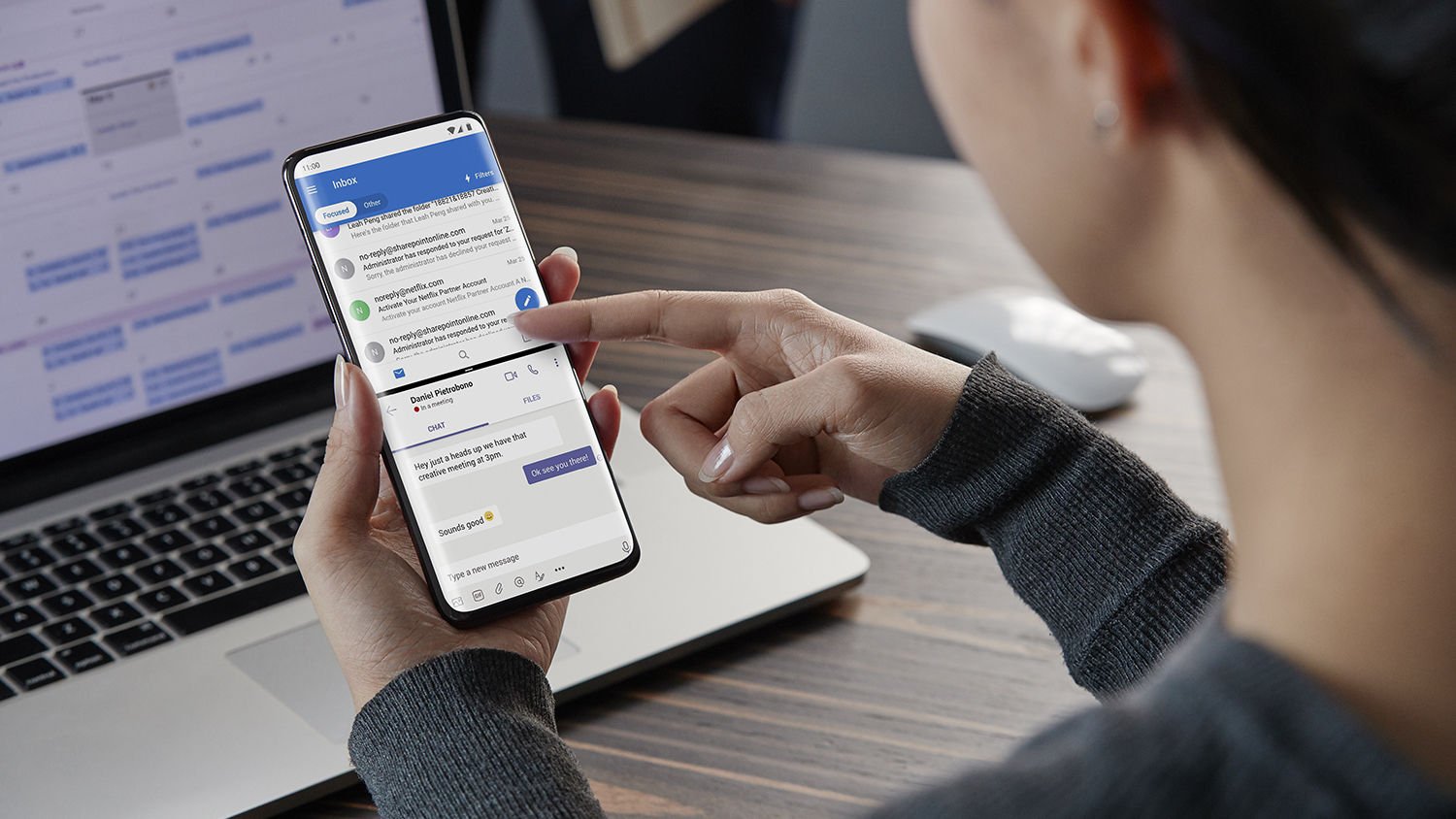
The small teardrop-like notch seen on the OnePlus 6T has also been sacrificed at the expense of the all-screen design. Instead, the f/2.0 16MP selfie camera has been relocated to a mechanised pop-up that rises from the chassis. According to OnePlus, there's no need to fret about durability as the pop-up will automatically withdraw back into the phone whenever it detects that it's falling. We tested it a few times, and it worked like a treat. Pushing on the pop-up also triggered the motor to retract the drawer – and surfaces a scolding message not to manually push on it on the screen.
OnePlus says it rates the mechanism for at least 300,000 return journeys out of the chassis. That equates to raising the selfie camera 150 times a day for three years, which is a lot of selfies, or 150 times a day for five-and-a-half years for the less selfie-prone among us. However, if you want to use the unbelievably fast Face Unlock feature that OnePlus includes with its handsets, then that could be used much faster. Research shows that the most smartphone-dependent amongst us can pick-up and unlock their devices thousands of times every day.
If that sounds like you, it might be worth avoiding Face Unlock or you could find yourself burning through your 300,000 selfie camera pop-ups much faster than three years. Even if you're the sort of person who doesn't hold onto a phone for more than two years, it could still negatively impact the re-sale value. Of course, it's unlikely that your selfie camera will immediately fall apart on the 300,001st pop-up, but it's just something to keep in mind that you didn't have to with the OnePlus 6T.

There's no getting around it, the selfie camera drawer is a really inelegant solution. It looks weird, not least because it's slightly off-centre at the top of the device and it makes an infuriating wrrizzz noise every time that it emerges. We definitely got more than our fair share of odd glances on public transport as the pop-up noisily hoiked itself out of the phone, like a bit of spy apparatus from The Naked Gun.
If you're not a fan of waiting the 0.53 seconds for the camera to emerge and unlock when it spots your face, the OnePlus 7 Pro 5G also has a fingerprint scanner embedded beneath the AMOLED screen. The sensor is 36% bigger than the one included with the OnePlus 6T, which should make for faster and more accurate unlocks. According to OnePlus, the scanner can now unlock in 0.24 seconds.
There's no getting around it, the selfie camera drawer is a really inelegant solution. It looks weird and it makes an infuriating wrrizz noise every time that it emerges
In our experience, it feels even faster than that. With the OnePlus 7 Pro 5G, it seems in-display fingerprint scanners have finally matched their physical counterparts in terms of speed and accuracy. Remember, this is still an optical sensor, which means it uses light to illuminate your fingertip to check the print – so don't expect to be able to use it in heavy rainfall, like the ultrasonic variant included in the Samsung Galaxy S10 and Galaxy S10 Plus. It also means that if your fingertip isn't completely covering the portion of the screen used to check the print first thing in the morning your room will be illuminated by a glaring flash of radioactive-green light. Not ideal.
Finally, although OnePlus 7 Pro 5G does boast some water and dust resistance, it doesn't have an IP Rating. That's because getting the handset officially certified costs money and OnePlus says it prefers to conduct its own internal tests and pass the savings onto you.
Call us old fashioned, but we'd much rather pay a little more and be safe in the knowledge that our handset has passed a standardised, industry-recognised test. Would you buy a car from a manufacturer that said it saved money by forgoing any official certification but the airbags definitely deployed in its own internal tests?
OnePlus 7 Pro 5G Review: Camera
OnePlus 7 Pro 5G carries a triple-camera on its rear panel – a first for the company. But this isn't simply a case of slapping an extra lens onto the camera found on its predecessor, this is an all-new set-up engineered from the ground-up. According to OnePlus, it's well aware that cameras have been one of the weakest elements of its past handsets – and that's something it's desperate to change with its latest effort.
As such, the new system is designed to be able to stand toe-to-toe with the flagship rivals that OnePlus has always positioned itself against. The triple-camera system starts with a 48MP main sensor that is 29% larger sensor than the one included with the OnePlus 6T. It's also fitted with both Optical Image Stabilisation (OIS) and Electronic Image Stabilisation (EIS).
That 48MP shooter is coupled with a 16MP ultra-wide and an 8MP telephoto lens. Combined, these two additional cameras mean the OnePlus 7 Pro is able to keep up with all the latest tricks you'll find on rival flagships, including fish eye touting ultra-wide shots and 3x lossless optical zoom. The latter works well and means you'll be able to convince Instagram followers that you were much closer to the front of the gig than you actually were. There's also 10x digital zoom, but frankly, the quality starts to erode pretty darn quickly as you approach that upper limit. If you're looking for the best zoom available, this ain't it – you'll be happier with a Huawei P30 Pro.
Overall, photos from the OnePlus 7 Pro 5G are solid. Colours are vivid – but not over-saturated and zingy like those from the Samsung Galaxy S10, and details are sharp. It's definitely a step-up from past efforts from the company. However, it's not going to take podium position in the smartphone photography wars anytime soon. Those who want to replace their DSLR with a phone should look to the Google Pixel 3 XL or the iPhone XS Max instead, although admittedly both will cost you more.





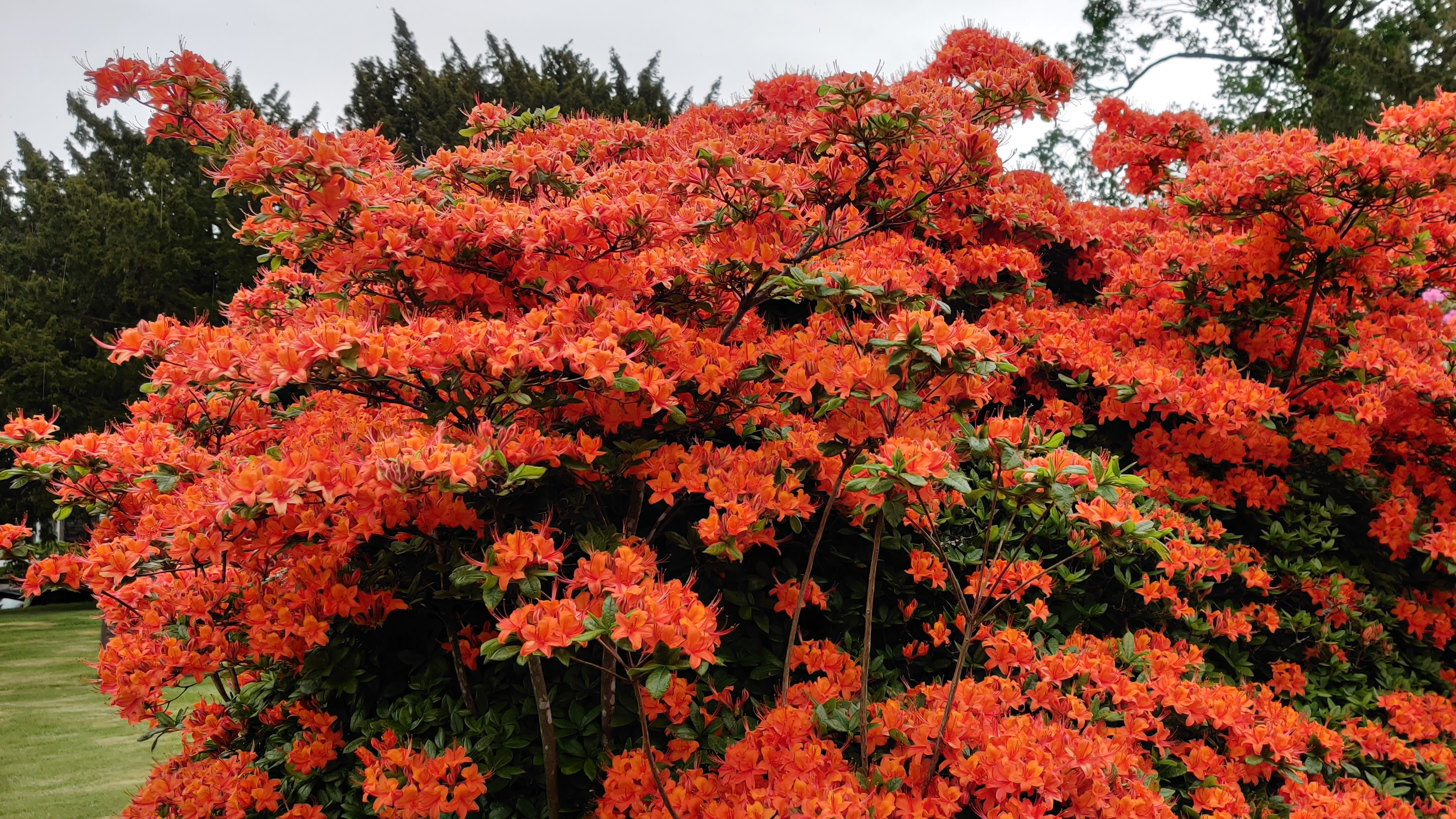
The triple-camera on the OnePlus 7 Pro 5G can muster all the usual effects and tricks you'd expect from a modern flagship smartphone, including portrait photos with artificial bokeh-style blur behind the subject. These look pretty good, although if there is a dramatic light source in the background details can quickly get lost, something that doesn't happen with the Pixel 3 series. It's also a shame that the amount of blur can't be altered after the fact. The default is pretty aggressive, which might suit your tastes, but it's a shame the option for something softer isn't there – something you'll find on almost every OnePlus 7 Pro rival in this price range.
Video performance is solid, although not revolutionary. However, slow-motion is now available all the way up to a ridiculously sloooooooow 480 frames-per-second, which is good fun and should result in some pretty unique moments for the Instagram feed.

OnePlus 7 Pro 5G Review: Software, Specs, Other Features
Powering the handset is the top-of-the-line Qualcomm Snapdragon 855 system-on-a-chip with an X50 modem, coupled with 8GB of RAM. As you'd expect from OnePlus – the company recently adopted "Fast and Smooth" as its mantra for software and hardware development – this feels seriously slick.
It's baffling that OnePlus can create such an exemplary, buttery-smooth Android experience when Google, the company that actually designs the open-source mobile OS, cannot match this level of performance with its flagship Pixel 3 series, which has been plagued with stuttering animations and crashing apps since its launch.
The car salesman slick level of performance on the OnePlus 7 Pro 5G is helped by the move to UFS 3.0 storage, which dramatically improves speed across the entire operating system – from loading-up a hefty PDF document for the first time, to saving photos from the camera, and launching apps. OnePlus favoured UFS 2.1 storage for its OnePlus 6 and OnePlus 6T, which offer sequential read speeds of 800MB/s. According to OnePlus, UFS 3.0 is at least twice as fast.
All of this means that if you're looking for the best showcase of what Android OS can be, look no further than the OnePlus 7 Pro 5G.
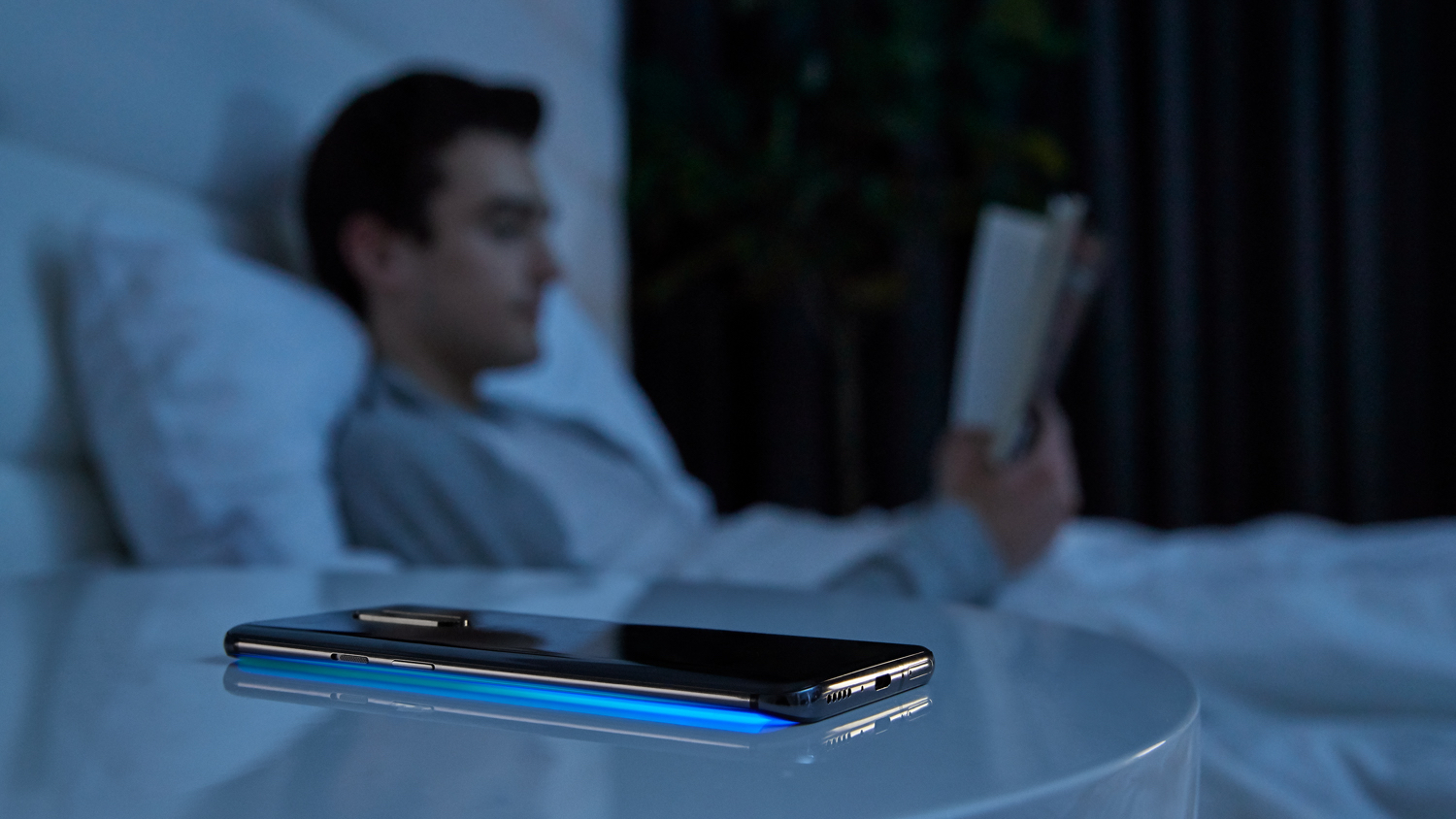
Out of the box, OnePlus 7 Pro 5G runs Android 9.0 Pie – complete with a few very subtle tweaks from the Shenzhen-based company that you can largely ignore if you want to. The ability to record your screen, like on iOS, and edit and share the video from directly within the Gallery has been added to the latest version of the OxygenOS operating system, as well as a new "Zen Mode". The latter locks your handset for 20 minutes, stopping you from doing everything except make and receive emergency calls and take photos. OnePlus believes the restrictive new mode will appeal to students and families with phone-obsessed offspring.
If you're looking for the best showcase of what Android OS can be, look no further than the OnePlus 7 Pro 5G
Although there are plenty of warnings before you initiate the software feature – to make sure you don't accidentally switch it on in your pocket just before you really need to access your phone, there isn't currently a way to deactivate the feature early... so you better be sure before you try. It's a nice idea, but feels like the kind of gimmick that Samsung used to pour into its own version of Android. Sure, this might help a handful of students go cold turkey during exam season, but it's not got anything like the depth or value of something like Digital Wellbeing – the usage tracking feature built into all Pixel smartphones – can offer.
Hopefully, OnePlus relegates this type of feature to an optional, standalone app in future, as one of the biggest appeals of its OxygenOS thus far has been its exemplary restraint with additional features.

Elsewhere, OnePlus 7 Pro 5G is fitted with an all-new vibration motor designed to improve the buzz in your pocket when calls and texts drop in. It's also used to make the small haptic taps that are scattered across Android 9.0 Pie more enjoyable. These are a nice addition and makes it feel like you're truly interacting with the operating system. However, Android still doesn't use its haptics anywhere near as well as iOS, which has a little more consistency about when you'll get a tap from the software.
While there's no wireless charging option on the all-glass OnePlus 7 Pro 5G (yes, we're still boring on about that), it does have a new Warp Charge 30 wired solution which will refill your battery from 0-50% in 20 minutes. That's seriously fast.
In fact, it's so good it changes how you think about charging your phone. Rather than planning well ahead, like leaving your handset on-charge overnight, you can literally plug it in for a few minutes in the morning, which makes sharing a single USB-C cable between your wireless headphones, smartphone and portable battery doable.
OnePlus says users can charge the handset and play graphic-intensive video games without compromising the charging speeds or getting the phone hot under the collar. Unfortunately, that's not something we've had the opportunity to really test quite yet. OnePlus 7 Pro 5G has a capable 4,000mAh cell, which is a step-up from the 3,700mAh battery fitted inside its predecessor. That's more than enough to keep things ticking along, even when you're getting record speeds on a 5G network.
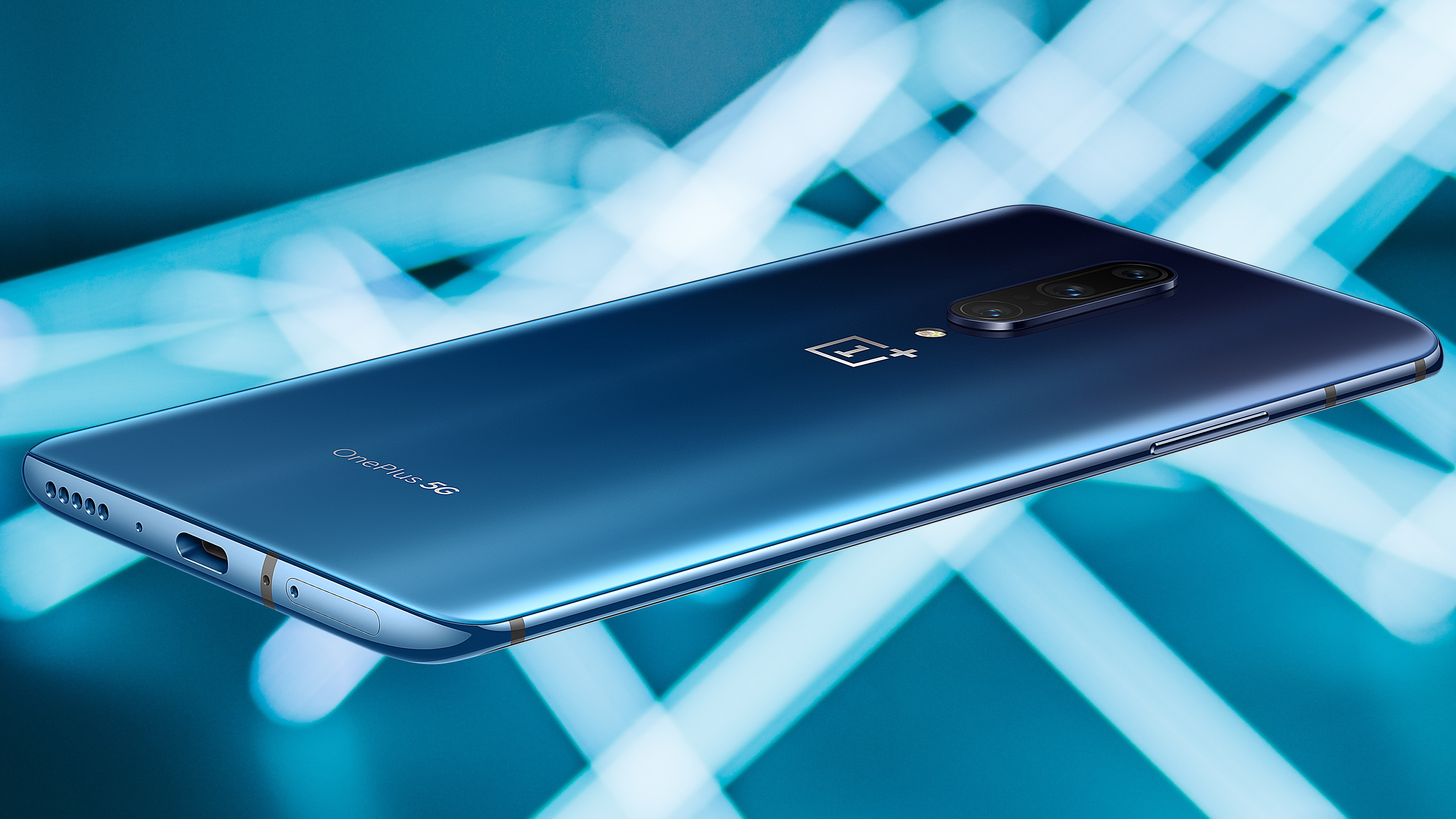
OnePlus 7 Pro 5G Review: Our Verdict
OnePlus 7 Pro 5G is a very ambitious phone – it's the first 5G-enabled handset to launch in the UK, and has a stunning 90Hz OLED display not found on any other smartphone on-sale right now. And all from a five-year-old company.
No matter what you think about the design choices, the colour, or the 5G speeds – it's undoubtedly a hugely impressive feat.
EE 5G can be staggeringly good and will probably pull-in faster speeds than your home broadband connections throughout the day. However, if you're not living in one of the six cities with 5G coverage – not to mention being in the right place in those cities to access the top speeds – then it's probably worth holding off and opting for the plain ol' 4G-boasting OnePlus 7 Pro for now.
But if you're willing to put up with some minor quirks in the 5G network and Android apps that aren't yet optimised for the eye-wateringly fast speeds that can be achieved with a 5G-toting handset, then OnePlus 7 Pro 5G is a phenomenal choice. Developed with EE engineers from the very beginning, it's difficult to imagine this won't offer the best possible EE 5G experience right now.
And 5G aside, the OnePlus 7 Pro 5G is a stunning victory lap of a smartphone, thanks to the astonishing 90Hz Fluid AMOLED, blink-and-you'll-miss-it speeds, and the wired Warp Charging which is the best you'll find on any phone at the moment.
That said, there are still some niggles with the OnePlus 7 Pro 5G. There's no wireless charging, no expandable storage, no adjustable bokeh blur in Portrait Mode, no IP Rating for water resistance... the list goes on. Worse still, all of these are available on similarly priced competitors, like the Samsung Galaxy S10e and Huawei P30.
While many of these were present in earlier OnePlus-branded handsets, these small irks are easily dismissed when the device is very competitively priced, and magnified when it's not.
Without any shred of doubt, OnePlus 7 Pro 5G is the best phone the company has ever built. It's also the best AMOLED display that you can buy on any phone right now. Not to mention, the best wired fast charging available. And it gives you access to the sped mobile network speeds in the country. If those align with your priorities for your next flagship smartphone, well... what are you waiting for?
Sign up to the T3 newsletter for smarter living straight to your inbox
Get all the latest news, reviews, deals and buying guides on gorgeous tech, home and active products from the T3 experts
As a former Staff Writer for T3, Aaron writes about almost anything shiny and techie. When he’s not barking orders at Alexa-powered microwaves or gawping at 5G speed tests, Aaron covers everything from smartphones, tablets and laptops, to speakers, TVs and smart home gadgets. Prior to joining T3, Aaron worked at the Daily Express and and MailOnline.
-
 Forget the tariffs, Paddington 3 is now on Netflix to bring you joy
Forget the tariffs, Paddington 3 is now on Netflix to bring you joyPaddington In Peru is now streaming on Netflix
By Mike Lowe Published
-
 Leaked AirPods prototype looks like Nothing... literally
Leaked AirPods prototype looks like Nothing... literallyAnd we are here for them
By Britta O'Boyle Published
-
 OnePlus Watch 3 lands in the UK with a flurry of freebies and a huge discount
OnePlus Watch 3 lands in the UK with a flurry of freebies and a huge discountThe new titanium-clad smartwatch brings 120-hour battery life, ECG health checks, and some serious launch offers
By Matt Kollat Published